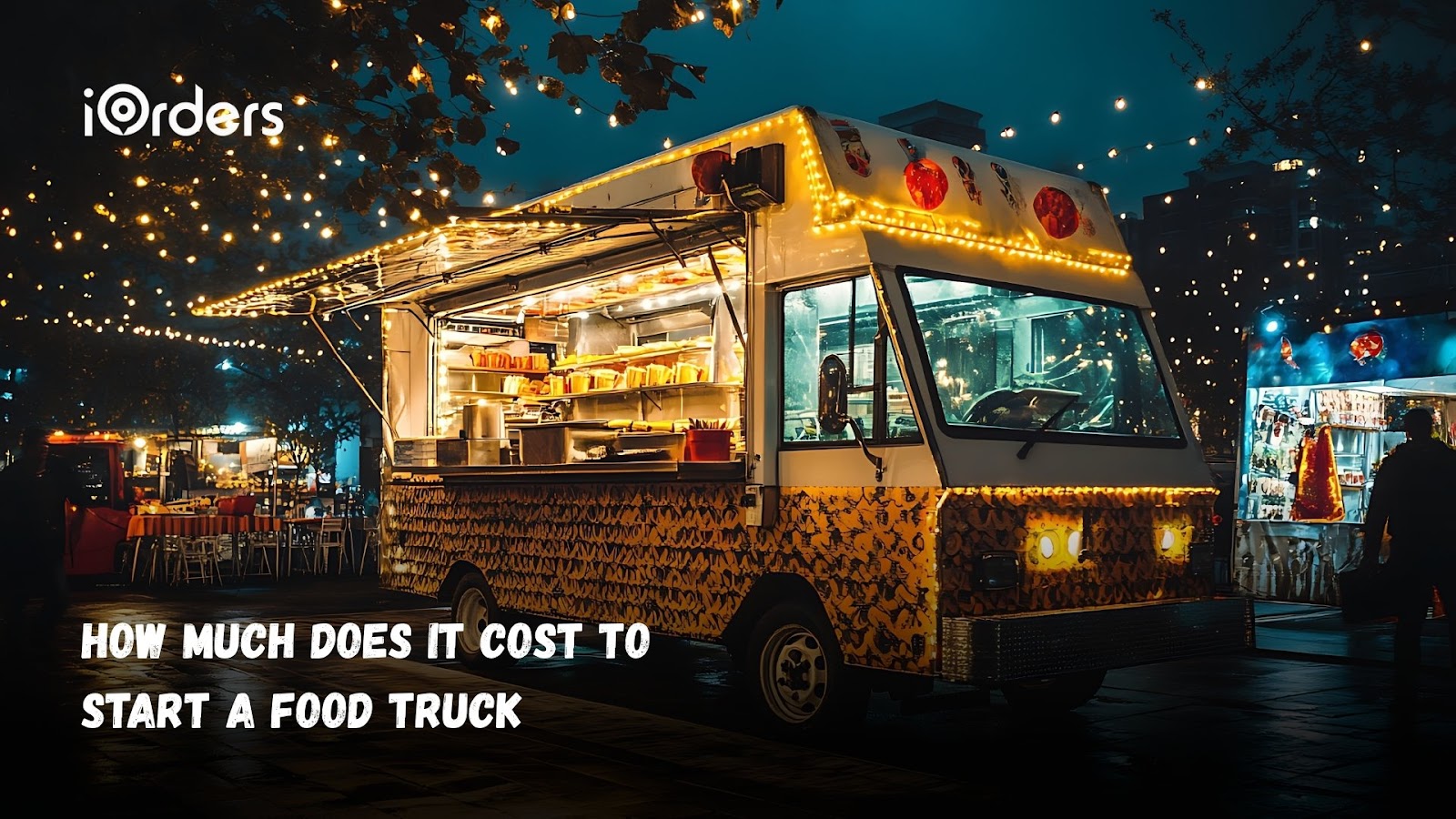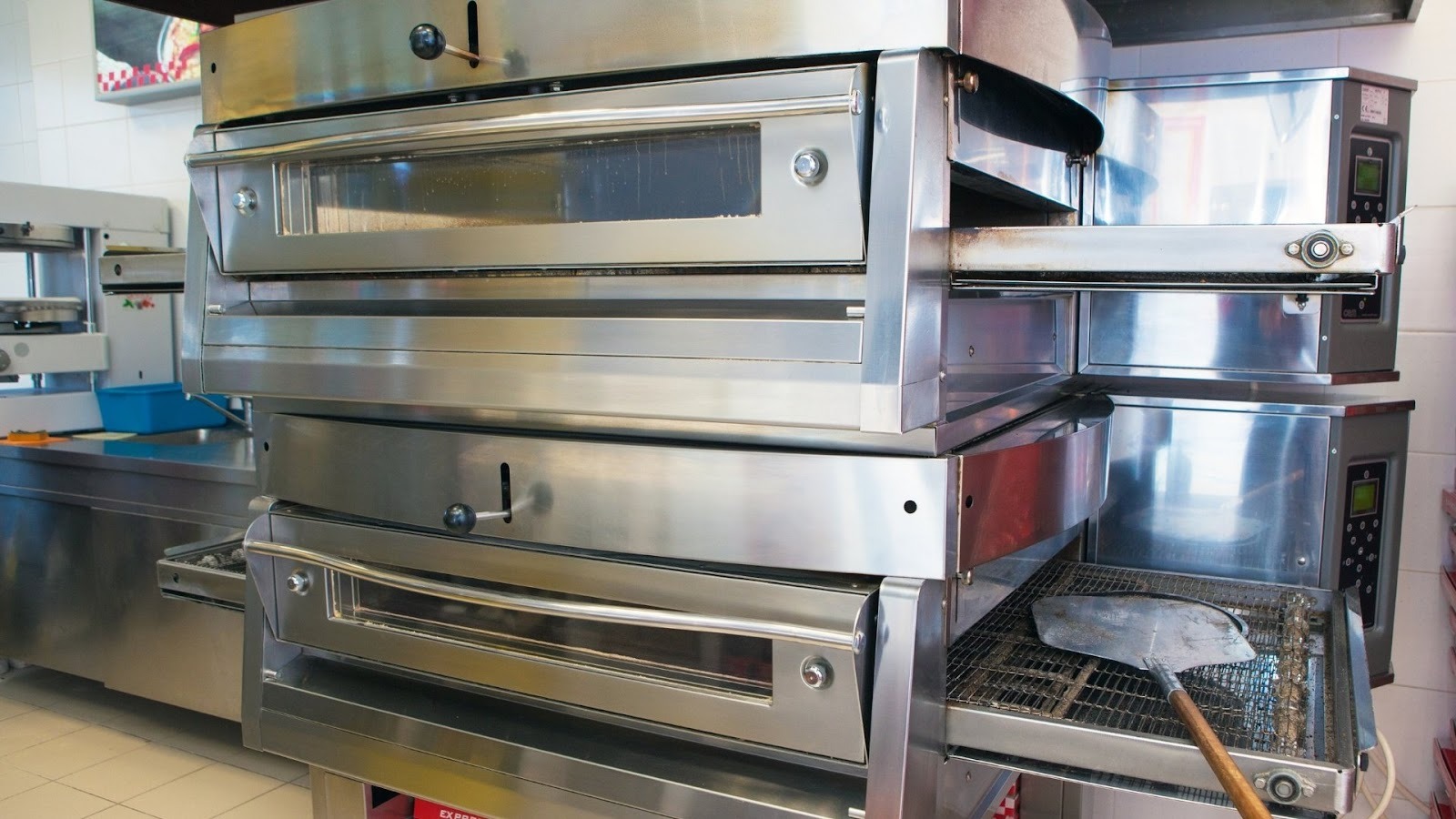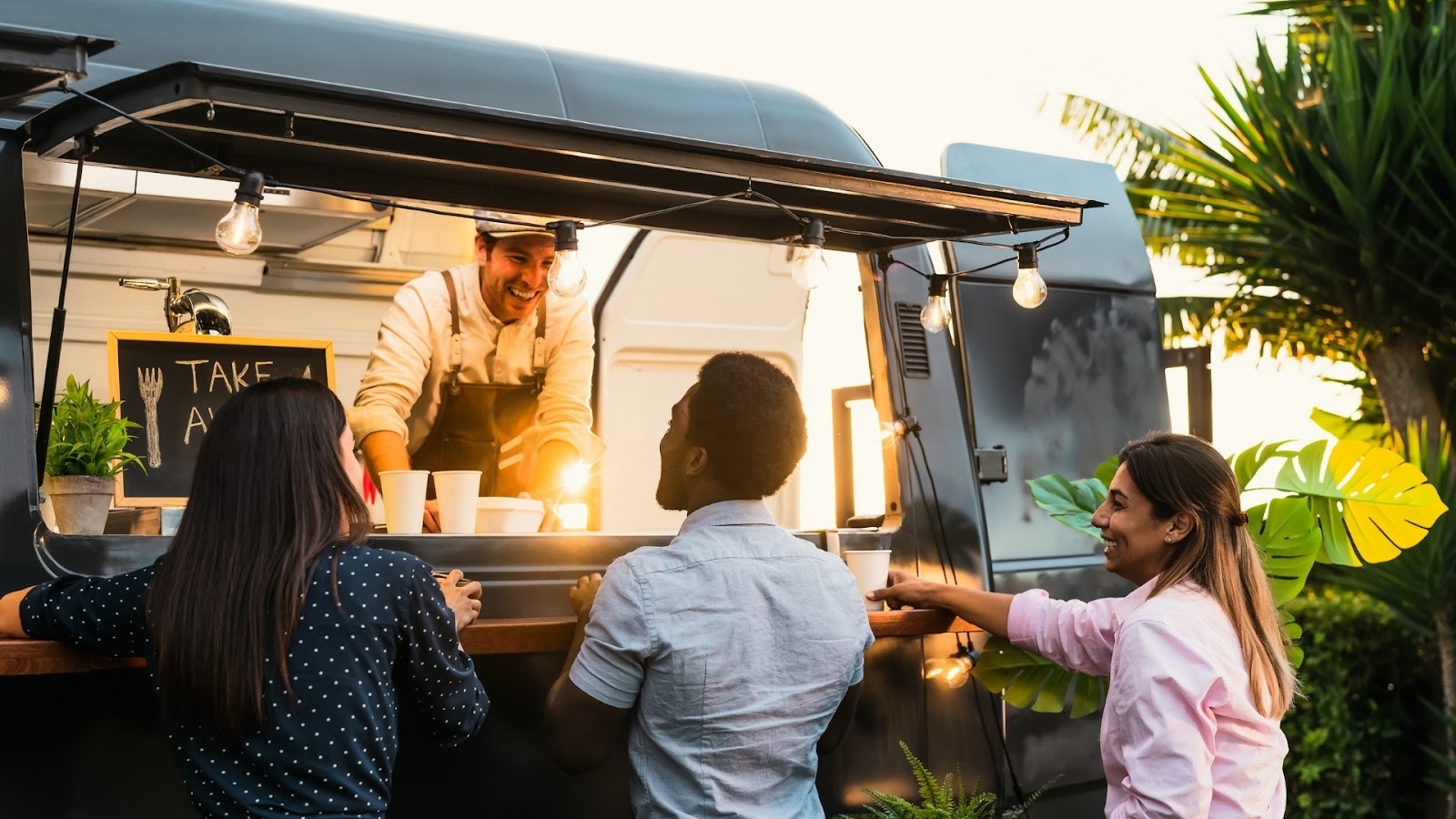November 13, 2025

Starting a food truck can be one of the most rewarding paths in the restaurant industry today. With lower startup costs than traditional restaurants and the freedom to move to where demand is highest, food trucks have become a preferred choice for chefs and entrepreneurs alike. The market size of food trucks in the United States reached $2.8 billion in 2024, underscoring the strong opportunity for new entrants.
Yet, before serving your first customer, it’s important to understand how much capital you’ll need to get started. Food truck cost depends on several factors, such as truck type, equipment, permits, and location.
This guide breaks down every major expense involved in launching a food truck. You’ll learn what to expect, where costs can add up, and how to plan your finances wisely.
Your food truck is the foundation of your business and one of the largest upfront expenses. The total cost of a food truck depends on whether you purchase a new vehicle, buy a used one, or build a custom truck from scratch. Each option comes with its own price range, benefits, and trade-offs.

Alt text: Initial Costs of Buying a Food Truck
Buying a new food truck offers reliability and the chance to customize your setup from the start. It’s a strong choice for operators planning steady, long-term service.
Used trucks are a practical option for those testing the market or working with a smaller budget. While they can significantly reduce startup costs, the conditions and setup need careful evaluation.
Building a truck from scratch allows complete design control. It’s best for food concepts that require a specialized kitchen layout or equipment configuration.
While the truck itself is the biggest upfront investment, it’s only part of your total budget. To get rolling, you’ll also need to cover several essential startup and day-to-day operating costs.
Recommended: Market Research for a Successful Restaurant Business Plan.
The costs vary depending on your menu, equipment quality, and how frequently you plan to operate. Below are some aspects to consider:

Alt text: Essential Startup and Operation Expenses
Equipping your food truck kitchen is often the largest part of your setup costs. The price depends on your cooking style, menu variety, and equipment brand.
Stocking your truck with ingredients, packaging, and basic utensils is another important upfront step.
Your truck’s mobility comes with ongoing fuel and upkeep expenses. Keeping your vehicle and kitchen equipment in top condition ensures smooth daily operations.
Once your equipment and supplies are in place, the next major step is securing the legal approvals to operate.
Also Read: Digital Menu For Restaurant: 7 Ways It Boosts Sales
Every food truck must meet local, state, and federal requirements before it can legally serve customers. These permits ensure food safety, proper taxation, and business legitimacy.

Alt text:Permits, Licenses, and Compliance Costs
Estimated range: $25,000 to $30,000 (averaging around $28,276 in the first year). These costs can vary depending on how many cities or counties you plan to operate in. Larger metro areas often require multiple permits for different zones.
Includes:
In addition to standard permits, operators must account for several location-based obligations that differ between Canada and the U.S.
Includes:
The reason why it varies is that in the U.S., regulations change from one city to another. Some require separate approvals for each operating zone. Meanwhile, in Canada, licensing and tax registration often involve additional steps, leading to slightly higher upfront costs in certain provinces.
Hiring professionals for licensing, taxation, and incorporation helps maintain compliance and reduce risk. Average fees range from $1,000 to $3,000 annually, depending on the level of service.
Benefits include:
With your permits and legal requirements handled, the next factor to plan for is the location from which you’ll operate.
For detailed information, check our blog, Restaurant Business License Requirements: Types & Checklist.
Where your food truck operates has a direct impact on daily expenses and revenue potential. Parking fees, local regulations, and customer traffic can all vary widely depending on the area and setup.
Your location determines not only how many customers you reach but also what you pay to stay there. Costs differ between urban, suburban, and event-based operations.
Typical location-related expenses include:
Choosing the right mix of locations, considering daily routes, weekend events, and private catering, can help balance costs and maximize sales potential.
Once your truck is up and running, ongoing expenses determine long-term profitability. On average, these monthly costs cover essentials like supplies, staff, and marketing.
Common monthly expenses include:
Example budget snapshot: A small truck operating five days a week might spend $6,000 to $8,000 per month in total operating costs. Adjusting routes, schedules, or event participation can help manage these recurring expenses effectively.
Also Read: 7 Types Of Restaurant Digitalization To Boost Efficiency.
Operating costs are only part of the financial picture. You’ll also need safeguards in place to prevent expensive setbacks.
Running a food truck involves multiple moving parts, literally and financially. Protecting your business from accidents, property loss, or liability claims is essential for long-term stability and peace of mind.

Alt text:Insurance and Risk Management
Every food truck requires a combination of coverage to meet legal standards and protect business assets. The average total premium starts around $1,000 annually, depending on coverage limits and location.
Common insurance types include:
Beyond insurance, risk management practices play a crucial role in keeping premiums affordable and operations safe.
Key practices include:
Once coverage is sorted, the next major cost choice is the truck arrangement. Some owners buy, while others rent to reduce upfront spending.
Read Also: Efficient Kitchen Workflow Management Strategies.
Choosing whether to rent or buy a food truck depends on your business goals, budget, and long-term plans. Each option affects startup costs, flexibility, and potential return on investment.
The typical rental cost of a food truck ranges from $2,000 to $5,000 per month, depending on the truck’s condition, equipment, and location. Renting is often ideal for testing new markets, running seasonal operations, or launching a food business with lower initial investment.
Here’s a quick comparison to help you evaluate which model fits your business strategy best:
Recommended: How to Manage Controllable and Non Controllable Costs in a Restaurant?
The kind of food you serve and the way you plan to serve it have a major impact on both startup and operating expenses. Your menu determines the kitchen setup, ingredient sourcing, and daily prep requirements, all of which influence your budget and profitability.

Alt text:How Menu and Concept Affect Your Food Truck Cost
Key factors to consider include:
With your concept planned, it’s time to look at funding options that can help you move from planning to launch.
Also Check: Seamless Takeout and Delivery Integrations for Restaurants.
Even with careful budgeting, launching a food truck requires upfront capital for the vehicle, equipment, and permits.
Common financing methods include:
Once your financial plan is settled, you’ll need to invest in branding and marketing so customers know where to find you.
A food truck’s success depends not only on great food but also on visibility and efficient order management. Investing early in branding, marketing, and technology helps build a loyal customer base and keeps operations organized from day one.

Alt text:Branding, Marketing, and Tech Investments
Key cost areas and investments include:
With your marketing foundation ready, it’s time to review expected earnings and your break-even timeline.
Recommended: How to Make a Small Restaurant Grow: Top 33 Tips.
Understanding potential earnings helps balance your investment decisions. While startup costs can be significant, many food trucks reach profitability within a relatively short period when managed efficiently.
Key revenue insights and performance metrics:
Monitoring these metrics regularly helps maintain healthy profit margins and ensures your food truck remains financially sustainable over time. Boost your food truck’s profitability faster with iOrders. Manage direct orders, reduce third-party fees, and keep loyal customers coming back, all through one smart platform.
Launching a food truck doesn’t have to stretch your budget. Smart planning and selective investments can reduce expenses while maintaining quality and service standards.

Alt text:Strategies to Minimize Startup Costs
Here are some practical ways to manage costs effectively:
Small financial adjustments like these can have a significant impact on long-term profitability, helping you maintain cash flow while growing sustainably.
Starting a food truck typically requires an investment ranging from $50,000 to over $200,000, depending on the vehicle, equipment, and regional permit requirements. Beyond the upfront costs, success comes from careful planning, compliance, and day-to-day financial discipline.
Owners who plan for recurring expenses, such as fuel, staffing, and marketing, tend to reach profitability faster. The right technology can make this process even smoother. Tools like iOrders help you manage orders, deliveries, and customer engagement in one place, saving both time and operating costs.
With a clear plan and the right support, your food truck can grow into a thriving, sustainable business.
Start your food truck journey with the right tools. Book a demo with iOrders and simplify your workflow today.
1. How much does it cost to start a food truck?
Startup costs generally range from $50,000 to $200,000. This includes the truck, equipment, permits, insurance, and initial supplies. The final amount depends on your menu, location, and whether you buy new or used.
2. Are used food trucks a good option for lowering costs?
Yes. Used trucks priced between $30,000 and $100,000 can reduce upfront expenses. However, always check the kitchen setup, mileage, engine condition, and past maintenance records before purchasing.
3. What permits do I need to operate a food truck?
You’ll need a business license, health department approval, fire inspection, and parking or vending permits. Requirements vary by city, so it’s important to confirm local regulations in advance.
4. How much should I budget for monthly operating costs?
Monthly expenses typically include fuel, maintenance, insurance, staff wages, food inventory, and marketing. These costs can range widely but are influenced most by your location and menu style.
5. How long does it take for a food truck to become profitable?
Most food trucks reach break-even within 1 to 2 years, depending on demand, pricing, cost control, and how consistently the truck is on the road.